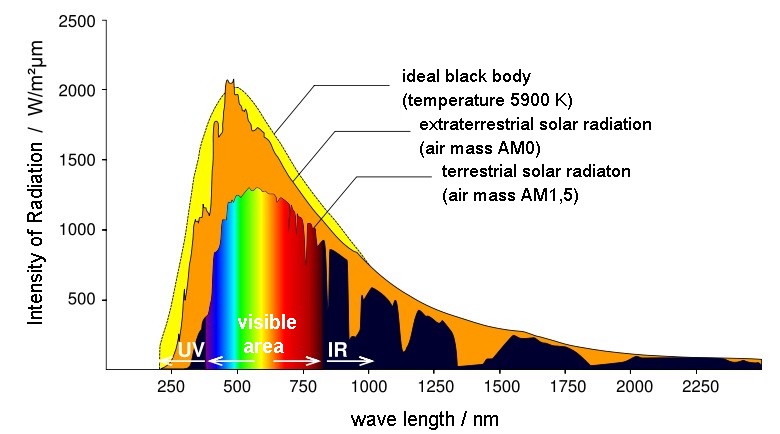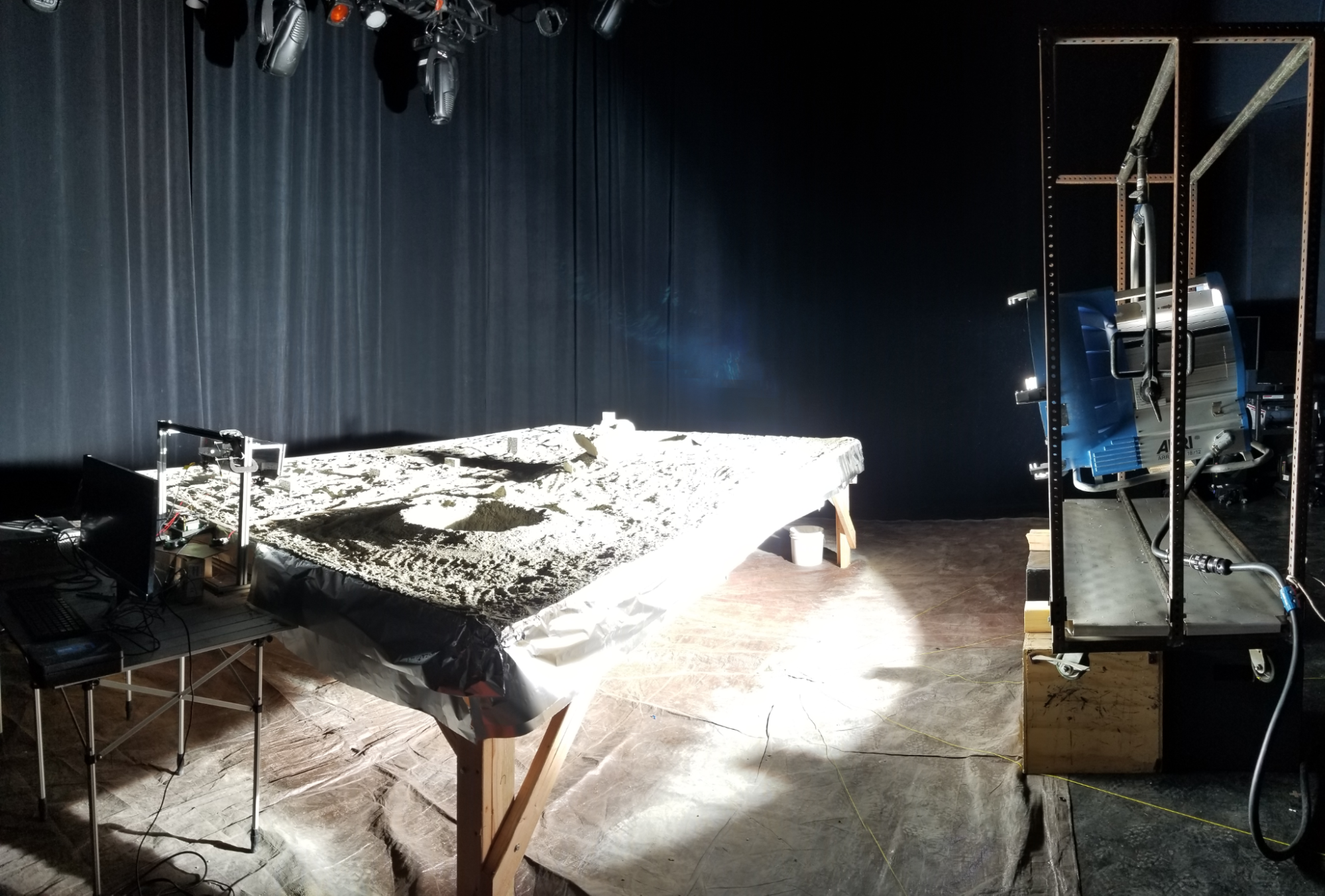Figure 1: Testbed for evaluating MoonRanger’s perception. Material, color and lighting are lunar-like. The line of rectangular blocks are at known locations for verifying that the terrain geometry created by the robot matches the geometry of the scene.
LUNAR POLAR LIGHT

It is challenging to illuminate a perception testbed with lighting that emulates sunlight that the rover will experience on the pole of the Moon. This is not nearly as simple as going outdoors on Earth. The Moon’s lighting is more intense, less-diffuse, and lower in the sky than what we experience on Earth. The light reaching the Moon is 1350 watts/meters2. By comparison, the light reaching the Earth is only 1120 watts/meters2. The Moon’s light is direct from the sun and has full infrared, but the Earth’s atmosphere reduces infrared (see the orange envelope of lunar sunlight versus the colorized envelope of Earth’s sunlight that appears in Figure 2). The atmosphere also bounces the light as if coming from all directions, not just straight from the sun. For this reason Earth shadows are not as dark or sharp as Moon shadows. The sun never rises more than a few degrees at the Moon’s pole, so when at the pole the sun sits on the Moon’s horizon, and incoming light is nearly tangential.
EMULATING LUNAR POLAR LIGHT

